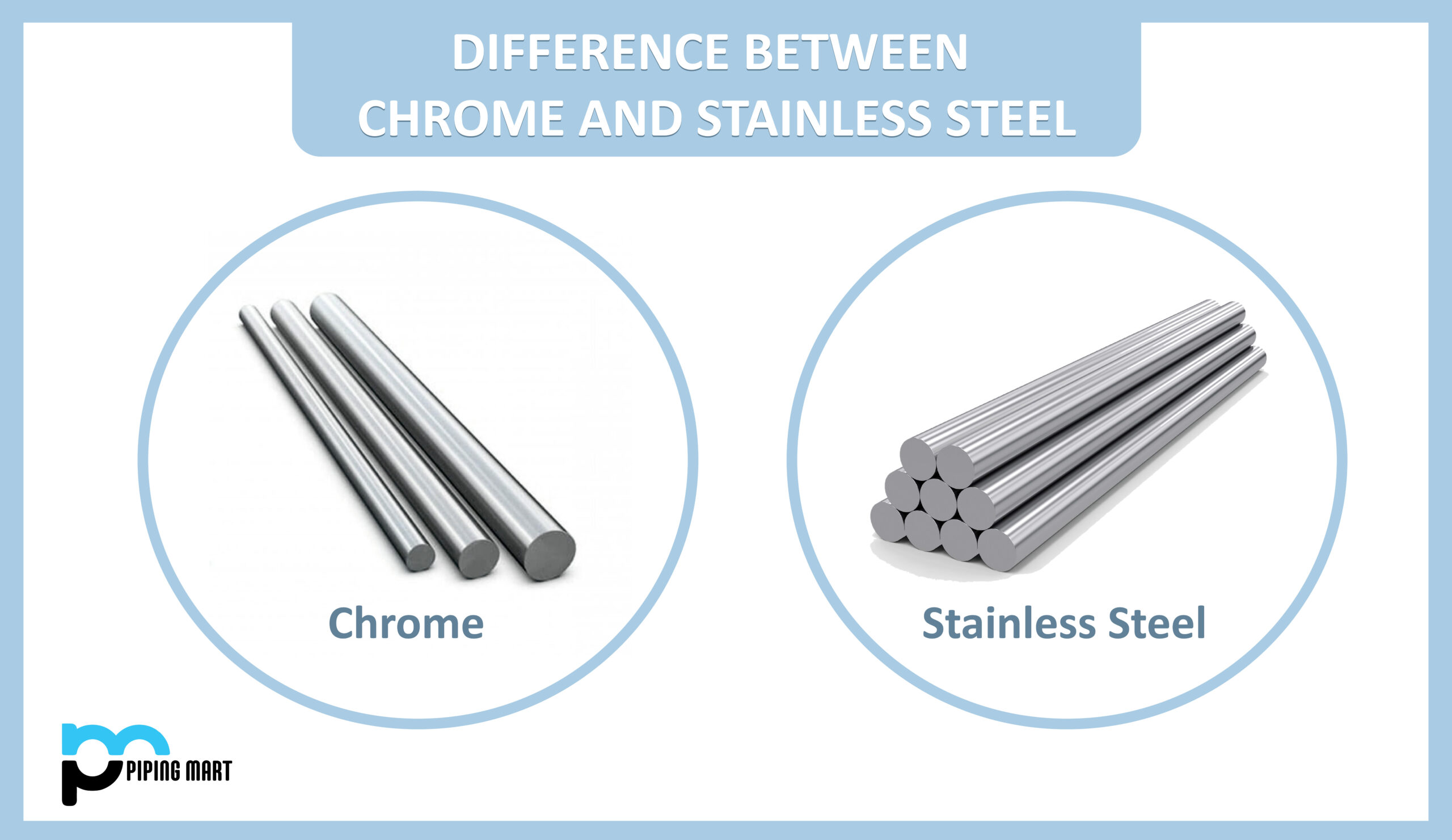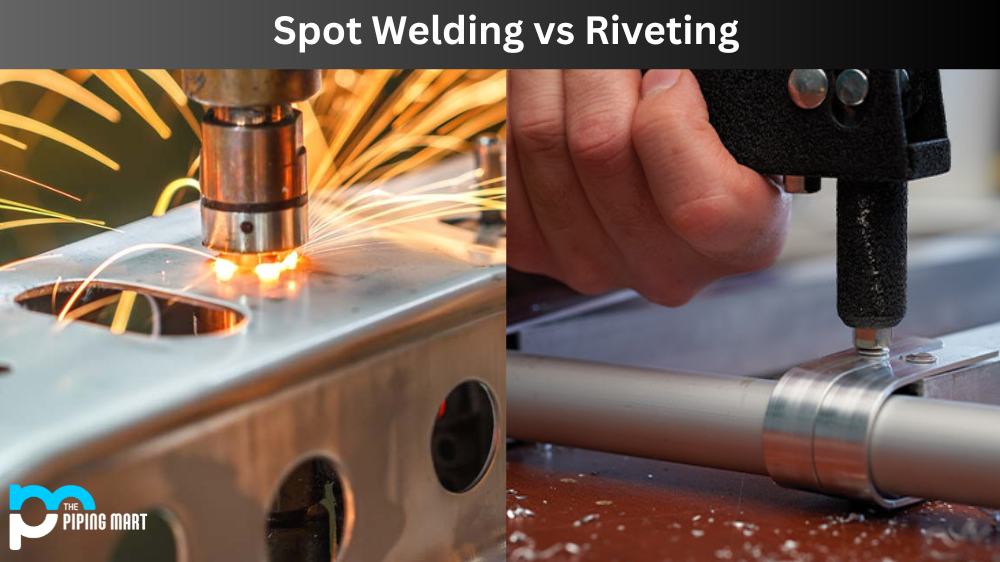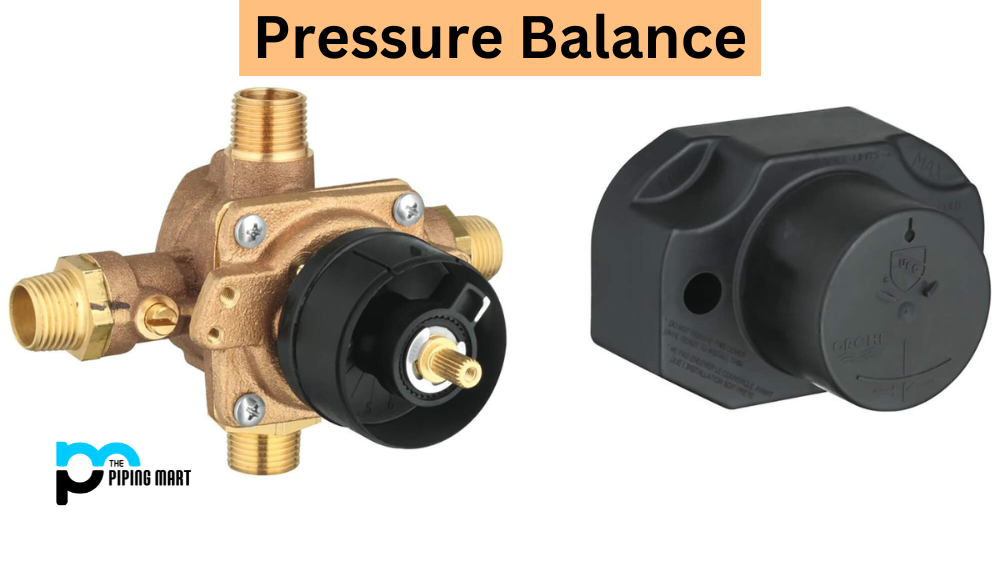What is Chrome Plating?
Any form of steel that has been combined with chromium to avoid rusting is known as chrome plating steel. This kind of steel has undergone the chrome plating procedure. A specified amount of chromium is put to the surface of the steel metal through chrome plating. The result is a glossy steel metal that has a pleasing appearance to the eye. In addition to its aesthetic value, chrome plating also has some defensive qualities. It shields the steel against rust and corrosion.
Chrome plating is a beautiful or practical finish used on a variety of items, including jewelry, tools, faucets, and vehicle parts. One may add a thin layer of chrome to any metal surface. However, chrome plating serves more than just decorative purposes; it also has useful uses. The object is protected from corrosion, the surface structure is improved, it becomes much more durable, and it is also simpler to clean thanks to chromium plating. Depending on the substrate being plated, various chemical solutions are used during the electroplating of chrome. Several finishing and buffing techniques are required after the initial electroplating procedure to make the product with its new chrome covering truly shine.
What is Stainless Steel?
Steel that has been mixed with other elements like chromium, carbon, molybdenum, nickel, silicon, and aluminum forms stainless steel, a type of metal alloy. Products made of stainless steel resemble chrome-plated metal. It takes a specific minimum amount of chromium to qualify as stainless steel, which is an alloy of chromium and nickel. Adding to that it is resistant to rust and stains in stainless steel. It likewise requires little upkeep and is sturdy.
Different grades of stainless steel are produced by combining these elements at specific ratios. For instance, 10% nickel and 12% nickel are both present in some steels. The qualities of the two types of stainless steel cannot be expected to be the same. The addition of nickel makes stainless steel stronger.
Austenitic, martensitic, and ferritic are the three sorts of industrial-grade stainless steel based on their composition. Martensitic is a chromium-iron alloy (Cr-10.5%-17% with some carbon content) while Ferritic is a chromium-iron alloy (Cr- 17%-27% with a low carbon content). Austenitic is a chromium-nickel-iron alloy (Cr-16% -26%, Ni -6%-22 and low carbon content). Stainless steel of the ferritic type is used to make a lot of culinary items.
Difference between Chrome and Stainless Steel
Since these two materials’ compositions are so dissimilar, there are variances in their qualities and potential uses. While chrome is a chromium-plated material and cannot be termed an alloy, stainless steel is an alloy that primarily comprises iron, carbon, and chromium. Otherwise, it can undoubtedly be difficult to tell stainless steel from chrome steel. The two metals could look similar at first glance.
The positive news is that there are ways to distinguish between stainless steel and chrome steel. Making use of a magnet is one approach. It is not stainless steel if a fragment of magnet clings to the metal. This is due to the non-magnetic nature of stainless steel. Chrome steel, on the other hand, is more likely to keep the magnet in place.
The way that chrome steel and stainless steel look can also be used to differentiate the two. While stainless steel is recognized for its smooth texture, chrome steel has a bright and shining appearance.
However, utilizing the visual approach to tell stainless steel from chrome steel can also lead to confusion. This is feasible because some metal treatments can give the appearance of brightness and shine to stainless steel. Anyone can mistakenly believe it to be chrome steel when it is not.
Difference between Durability
If properly maintained, chrome steel can last the consumer for a very long time. If used properly and in the appropriate setting, it is durable.
Dry environments are the best conditions for chrome steel. Additionally, there shouldn’t be any substances in the area that could lead to chemical or crevice corrosion. Once the chrome steel has been damaged, the likelihood that it will begin to rust is very high. The surface of chrome steel is permeable to a wide variety of objects. They consist of metal tools, doorway, and clamping attachments.
Once rusting has started, it can quickly spread beneath the chrome coating.
In conclusion, chromium steel is not entirely dependable in terms of durability.
Stainless steel, on the other hand, has unmistakably established itself as one of the strongest metals. Due to the endurance of stainless steel, products produced with it are frequently pricey. This feature also makes it perfect for those demanding and dangerous applications in addition to a wide range of uses.
Composition
Chromium is the single element present in chrome; it is not an alloy.
Stainless steel: Stainless steel is an alloy made of iron, carbon, and at least 10.5% chromium. Nickel might or might not be present. Nickel is one of the most expensive alloying elements, hence its use is relatively restricted.
Cost of Chrome vs Stainless Steel
Are chrome prices higher than those of stainless steel?
The individual will have to pay less for chrome steel than for stainless steel when it comes to pricing. Since stainless steel has many more desirable qualities than chrome steel, this is to be expected. Strength and durability are two characteristics that are widely discussed. Compared to chrome steel, stainless steel is more robust and long-lasting. Therefore, chromium steel should be the metal of choice if the person has a tight budget. This will nevertheless rely on the metal’s intended use.
Pros and Cons of Chrome and Steel
Chrome has many advantages to offer, some of which include a lavish, shiny appearance, it has modern components, and less expensive than stainless steel. If used properly, it is also highly durable.
Some cons of chrome steel include that it requires regular upkeep to be able to maintain its glossy appearance, easy scratching is possible and, chrome steel displays fingerprints and even dust particles.
Some of the many advantages of stainless steel include higher durability as compared to chrome, excellent corrosion resistance, less maintenance required than chrome steel and it is available in a variety of grades.
Some cons of Stainless Steel include that it leaves visible dust and fingerprints and is less aesthetically pleasing than chrome steel.
Uses of Chrome and Stainless Steel
Chrome: Objects are not built with solid chrome (chrome as the sole metal). Instead, it is applied as a thin layer to steel- and occasionally aluminum, brass, copper, plastic, or stainless steel-made products.
Stainless Steel: Kitchen appliances made of stainless steel include cutlery, sinks, saucepans, washing machine drums, microwave oven liners, and razor blades. Additionally, it is employed in civil engineering to create masonry supports, lintels, lighting columns, reinforcing bars, street furniture, window fittings, and structural sections. Additionally, it is employed in the production of chemical tankers in ships, road tankers, ship containers, automotive trim/grilles, and exhaust systems. In addition, stainless steel is utilized in several other industries, including those that produce oil and gas, medical equipment, catering equipment, brewing, distilling, food processing, and water and sewage treatment.
Manufacturing of Chrome and Stainless Steel
Chrome
The metal workpiece or object is first cleaned and degreased before being chrome plated. The workpiece or object is put inside a container filled with chromium anhydride after being carefully cleaned to ensure there is no remaining residue. Then, the container receives an electrical charge, causing a chemical reaction that causes the chromium to adhere to the workpiece or item.
Since, these are simply the fundamental procedures of chrome plating, other processes, like finishing and polishing, may be carried out by some manufacturing businesses. Nevertheless, the use of an electrically charged chromium solution distinguishes all chrome plating techniques. An outer coating of chromium is created on the surface of the workpiece or object as a result of the chromium depositing itself there due to the electrical charge.
Decorative vs Hard Chrome Plating:
Depending on how much chromium is used to create the layer, chrome plating is frequently classed as either hard or decorative. The normal thickness of decorative chrome plating was between 0.05 and 0.5 micrometers. It is used for items and works constructed of a variety of materials, such as copper, plastic, aluminum, low-carbon steel, high-carbon steel, and different alloys.
On the other hand, hard chrome plating is far thicker than its decorative equivalent. It is widely chosen and is frequently referred to as industrial chrome plating due to its increased strength and durability. Hard chrome plating makes it possible to produce an outer layer that is thicker, more durable, and naturally resistant to deterioration.
Stainless Steel:
The raw materials are being melted: For current stainless steel manufacturing applications, a furnace is used to heat the various types of stainless steel materials to their melting points. According to sources, this procedure can take between 8 and 12 hours. The next stage of stainless steel production can start after the metal is molten.
Elimination of Extra Carbon: To remove extra carbon, the molten material is put into a vacuum oxygen decarburization (VOD) or argon oxygen decarburization (AOD) system. This procedure could produce a conventional or a low-carbon form of the alloy, for instance, 304 versus 304L stainless steel, depending on how much carbon is removed. The final product’s hardness and tensile strength may be impacted by this.
Stirring or tuning: The molten steel may be churned to distribute and/or remove particular stainless steel components from the mixture, helping to fine-tune the quality of the finished product. This makes it more likely that the stainless steel will be of consistent quality and suit the end users’ requirements (like Marlin Steel).
Metal forming: Several shaping techniques are applied to the stainless steel as it starts to cool, commencing with hot rolling while the steel is still above its crystallization temperature. Steel is given a rougher shape by hot rolling, which is frequently done to produce metal billets or blooms. The stainless steel can be cold rolled to produce metal blooms or billets with specified specifications.
Annealing and heat treatment: It is possible to anneal stainless steel to reduce internal tensions and change its mechanical characteristics (heated and cooled under controlled conditions). Descale the steel if it has been annealed to prevent harm to the protective oxide layer.
Chopping and molding: After annealing, stainless steel is subjected to several cutting and shaping procedures to produce a final product that is perfect for the application. The precise procedures utilized to cut the stainless steel will change depending on the size, shape, and final product that is desired.
Surface finishes application: Before sending their billets, blooms, or wires to other manufacturers, the stainless steel maker may give them various surface treatments. Depending on how the steel will be used, a different finish will be applied; nonetheless, one of the most popular surface finishes is simply grinding the surface to eliminate impurities and make it smoother.
How to clean and maintain Chrome Plating and Stainless Steel?
Chrome:
Depending on where it is used, chromium requires different levels of cleaning frequency. Items for decoration typically merely require dusting. To keep their high shine finish, bathroom and kitchen fixtures may require daily cleaning in addition to weekly cleaning. Regular cleaning makes it simpler to get rid of the water-mineral-induced streaks and stains that make chrome finishes look worn-out. Using a dishwasher:
Fortunately, Chrome is simple to maintain and clean with a few items from the pantry.
Create a Cleaning Agent
Warm water in a sink or bucket should be diluted with one teaspoon of dishwashing liquid. To completely spread the soap, stir the water.
Wipe the chrome down.
Dip a soft cloth or non-abrasive sponge into the cleaning solution. Don’t let it drip while wringing. Utilizing the damp sponge, slowly clean the chrome towel bar, faucet, or another plumbing device. To avoid spreading dirt back onto the chrome, periodically rinse the sponge in the cleaning solution to remove any remaining debris.
The cleaner should make use of an old, soft toothbrush dipped in soapy water to clean cracks and crevices. Sprinkle some dry baking soda on the sponge or toothbrush to remove stubborn filth like dried toothpaste or food. Baking soda’s mild abrasive properties will help to release the mess.
Cleaning the chrome, then buffing it dry is next. To remove any soapy residue, rinse the area with clean water and a sponge. Finally, polish the chrome to a high sheen with a lint-free microfiber cloth. Any stains or spots can be eliminated by carefully drying.
Using Vinegar: Develop a Vinegar Solution
As a result of the minerals, it contains, hard water can leave stains and streaks. These stains are difficult to remove with soapy water, especially if the buildup is substantial. Mix 50 percent ordinary water and 50 percent distilled white vinegar to erase the spots. (Use distilled water devoid of minerals for optimal results.)
Use a toothbrush or sponge dipped in the vinegar solution to clean the chrome. Use pure distilled white vinegar to eliminate the hard water stains if the diluted solution fails to do so. To give the vinegar time to dissolve the mineral deposits, rub lightly and move slowly.
Buff the chrome dry with a microfiber towel after giving it a thorough rinse with plain water. Use a toothbrush or sponge dipped in the vinegar solution to clean the chrome. Use pure distilled white vinegar to eliminate the hard water stains if the diluted solution fails to do so. To give the vinegar time to dissolve the mineral deposits, rub lightly and move slowly.
Rinse and Dry Rinse the surface thoroughly with normal water, then use a microfiber towel to buff the chrome dry.
How to remove spots from Chrome Plating?
To remove crusty spots, utilize aluminum foil.
Aluminum foil can assist chrome to get rid of rust so it doesn’t lose its brilliance. A square of aluminum foil should be crumpled into a loose ball. After dipping the foil in a solution of warm, soapy water, lightly wipe the rusted chrome in circular motions. While cleaning, make careful to keep the chrome and foil extremely moist. Use a fresh square of foil until the chrome is clean if the old one starts to tear or fade.
After cleaning, give the chrome a thorough washing in warm water before buffing it dry. Remove Hard Water Stains. Dip the aluminum foil in vinegar for improved results if there are rust and hard water stains.
After cleaning, give the chrome a thorough washing in warm water before buffing it dry.
Stainless Steel:
Cleaning the Interior: Grab a clean, dust-free, and, most importantly, grit-free cloth to start with to prevent scratching the stainless steel. One of the most widespread misunderstandings about cleaning stainless steel is that it takes a lot of effort, but it’s much simpler than most people realize.
Using a cloth washed with warm water and dish soap is one of the best ways to clean stainless steel. After that, the cleaner should be given a good rinse with some plain warm water. Keep the warm water from drying out on the stainless steel’s surface. Instead, use an absorbent handkerchief to wipe it away. Getting rid of any remaining residual water on the stainless steel will aid in preventing watermarks as it dries. The use of a nylon bristle brush is highly recommended.
Tips for cleaning Stainless Steel:
One should avoid using abrasives on stainless steel- No use of steel wool, metal brushes, abrasive pads, sandpaper, or other harsh abrasive cleansers on stainless steel. Certain soft abrasives might be effective in very specific situations, but there should always be conduction of a spot test and waiting for the material to dry before using it to clean big areas.
Utilize the proper safety equipment- When handling any acidic or corrosive cleaners, workers will be kept safe by safety goggles, safety glasses, aprons, gloves, and other protective gear. The cleaner will be able to wear fewer safety precautions if they use an electrolytic weld cleaner to remove discoloration and safeguard the surface.
Clean in a well-ventilated, secure environment – Always clean stainless steel parts in a well-ventilated place, and keep chemicals off nearby surfaces.
If one has to use any kind of acid to clean stainless steel components, always add water slowly and cautiously to the acid to avoid any splashing. Before handling any acid, be sure they are following all of the manufacturer’s directions by reading the safety information.
Follow the instructions – Even if previously there have been cleaning goods used, always check the instructions again to be sure the person didn’t miss anything. Different cleaning chemicals demand various cleanup and handling techniques because not all cleaning products are created equal.

Pipingmart is B2B portal specializes in industrial, metal and piping products. Also, share latest information and news related to products, materials and different types grades to help business dealing in this industry.




